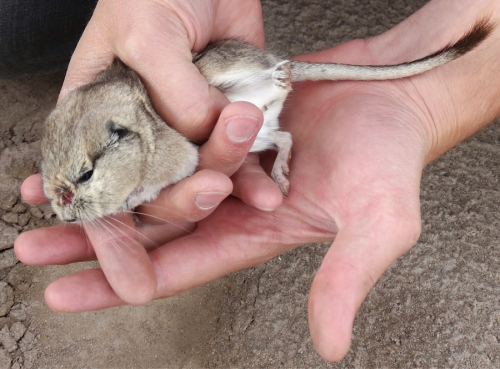The last time you saw a rat scurrying across your kitchen floor, what was the first thought that came to mind? While most people might think, there’s a rat in my house, have you ever considered asking, how large is that rat’s genome? Scientists at McMaster University, including one researcher at Yale, have done just that—and for a compelling reason.
In 1999, scientists discovered that a rodent in Argentina, the red vizcacha rat, Tympanoctomys barrerae, has the largest genome in mammals, at a size nearly three times larger than that of humans. For an animal smaller than your hand, this was surprising news. Furthermore, this rat has about twice as much DNA and twice as many chromosomes as its closest relative, the mountain vizcacha rat (Octomys mimax), even though they share a recent common ancestor who lived about 5 million years ago. Puzzled by this rodent’s giant genome, researchers sought to determine how this genome expansion occurred.
In an investigation published earlier this year, researchers performed genomic sequencing to resolve whether this event resulted from whole genome duplication, an unknown phenomenon in mammals (although common in plants), or from the accumulation of repetitive DNA. Ultimately, this study found no sign of duplicated genes and instead uncovered signatures of repetitive DNA across the genome, supporting the latter hypothesis.
However, many questions still remain. “We still don’t know why these rodents can tolerate such large genomes, or why they have so many chromosomes,” said Nathan Upham, a lead scientist on this investigation. “These are fundamental questions about genome architecture and of broad relevance to all mammals, including humans.”
Now a postdoctoral associate in the Department of Ecology and Evolution at Yale, Upham is currently expanding this project by reconstructing a larger tree of life for all mammals, an undertaking that spans nearly 6,000 species. “We are finding that this much larger context gives us an overview of evolutionary ‘norms’ and ‘outliers’ across all mammals,” Upham said. “Designing studies around the outliers gives us chances to ask questions about how life works.”
So, the next time you consider setting up a rattrap, it might be worth taking the time to appreciate just how remarkable rodents can be.
Featured image courtesy of Nathan Upham, Yale Department of Ecology and Evolutionary Biology

